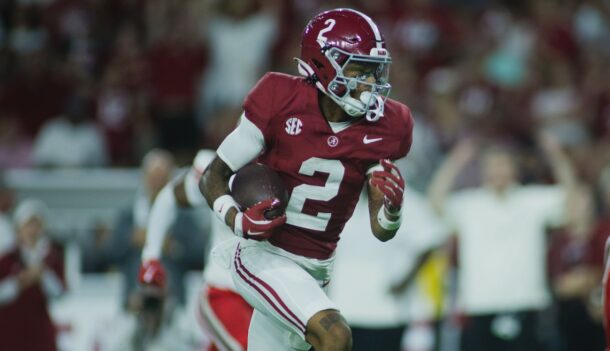In SEC country, stadiums are 90,000-seat cathedrals that rise out of quaint college towns with populations half that size. They are revered gathering places, and the homes of scores of happy memories from Saturdays gone by.
SEC fans love their home turf, and for that reason, trying sort them is bound to stir up as many debates as ranking the teams themselves. Whether to place more value in the time-honored traditions of Kyle Field or the beauty of a Saturday afternoon in Athens is an exercise in utter subjectivity, but when it comes to college football, debate is part of the fun.
With that in mind, here’s our ranking of the SEC’s best stadiums for 2015.
1. LSU’s Tiger Stadium
Capacity: 102,321
There’s little like the environment of Tiger Stadium on a Saturday night. LSU fans are some of the loudest in the country, and a long day of tailgating only revs them up. As former quarterback Rohan Davey once noted, you can smell the bourbon from the tunnel at “Death Valley.” Famously, the Tigers faithful brought on a virtual earthquake in 1988 when a touchdown pass on fourth-and-10 late in the game gave LSU a 7-6 win over No. 4 Auburn. Back then, the stadium held about 80,000. After an expansion completed prior to last year, it’s now among the largest in the country.
2. Alabama’s Bryant-Denny Stadium
Capacity: 101,821
Not surprisingly, they know how to do football in Tuscaloosa. Bryant-Denny features one of the best game-day experiences in the country, largely because the Crimson Tide gets the details right. From its central on-campus location and lush tailgating opportunities to the well-orchestrated “Roll Tide Roll” chant when Lynyrd Skynyrd blares over the PA, the atmosphere is world-class. That is, unless you’re an opposing team. While the people of Alabama may be welcoming to guests, their football team is decidedly not. The Crimson Tide didn’t lose a game at Bryant-Denny from 1963-82, a streak of 57 games. More recently, Alabama is 50-6 at home under Nick Saban.
3. Texas A&M’s Kyle Field
Capacity: 102,512
Traditions help make college football so beloved by its fans, and in few places does tradition dominate like it does at Texas A&M. Now the largest stadium in the conference after a $450 million renovation, the upgrades haven’t diminished the historic feel of Kyle Field. Instead, they’ve only added more seats for the 12th man and heightened the intimidation factor for opposing teams.
4. Georgia’s Sanford Stadium
Capacity: 92,746
Set in the middle of campus and walking distance from a hopping downtown district, Sanford Stadium in Athens is home to the quintessential SEC experience. And while Bulldogs fans may not have the reputation of some of their SEC brethren, Sanford Stadium can get as loud and hostile as any venue in college football. When visiting, be sure to get to your seat early; the Battle Hymn solo is one of the most underrated pre-game traditions in the country, and will raise goosebumps on even the most jaded opposing fan.
5. Florida’s Ben Hill Griffin Stadium
Capacity: 88,548
“The Swamp” may not be as imposing as it once was, but that has nothing to do with the venue or the fans. When the Gators are at their best on the field, there are few places in the country tougher to play than Gainesville. It’s hot, it’s loud, and it sold out 137 games in a row from 1989-2011, creating an environment no opposing team enjoyed visiting.
6. Tennessee’s Neyland Stadium
Capacity: 102,455
Nestled next to the Tennessee River and accessible by boat, Neyland Stadium has been the Volunteers’ home for six national championship seasons, including four won by its namesake, former coach General Robert Reese Neyland. Until recently being overtaken by Texas A&M’s expansion, Neyland Stadium was the largest stadium in the SEC and it remains one of the loudest.
7. Auburn’s Jordan-Hare Stadium
Capacity: 87,451
Auburn has two of the conference’s most well-known traditions — the pre-game “War Eagle” flight and the postgame gathering at Toomer’s Corner. What happens in between often is equally memorable. Since opening in 1939, Jordan-Hare has been home to some of the most iconic moments in school history, including a 1989 win over Alabama in the first Iron Bowl played on the Plains, and the “Kick Six” game-ending touchdown in 2013 Iron Bowl. Tigers fans can also enjoy college football’s largest scoreboard, beginning this season.
8. South Carolina’s Williams-Brice Stadium
Capacity: 80,250
Ever since debuting its pre-game use of “2001: A Space Odyssey” in 1984, Williams-Brice Stadium has become known for its crowd-hyping tactics. In recent years, that’s grown to include “Sandstorm,” a techno-pop anthem now synonymous with frenzied, towel-waving Gamecocks fans. And while renovations have quelled the infamous swaying in the upper decks, slight movements are still sometimes reported when the crowd is in full throat.
9. Arkansas’ Donald W. Reynolds Razorback Stadium
Capacity: 72,000
The home of the Hogs is a top-of-the line facility, including sleek design and a state-of-the-art video display. Its open layout doesn’t hold sound as well as some SEC venues, but Hogs fans are rabid, and the call of “Woo Pig Sooie” echoing through the Ozarks can be downright eerie for opposing teams.
10. Missouri’s Faurot Field
Capacity: 71,168
Perhaps best known for the massive stone M adorning the berm beyond the North end zone, Faurot Field has been an unwelcoming venue for opposing teams in the past decade. The Tigers are 45-13 at home since 2006. That success has transitioned well to the SEC, as Missouri is 11-3 at Faurot Field over the last two years, helping the Tigers claim back-to-back SEC East titles.
11. Ole Miss’ Vaught-Hemmingway Stadium
Capacity: 58,580
If we were only talking tailgating, Ole Miss would come in much higher on this list. The Grove is perhaps the most famous spot in the country for pre-game partying, and while Vaught-Hemingway is less acclaimed, the classic, single-deck structure has its charms. It’s also in the midst of an upgrade. Updates for 2015 include new suites and club-level seats, and a more significant expansion is slated to push capacity to 64,038 by the 2016 season.
12. Mississippi State’s Davis Wade Stadium
Capacity: 61,337
It’s not up there with the 90,000-seat behemoths, but Davis Wade’s raucous, cowbell-ringing fans have helped give the Bulldogs a marked home-field advantage in recent seasons. Last year, Mississippi State went 7-0 at Davis Wade to tie the school record for the most home wins in a single season, and 19 of the 20 biggest crowds in stadium history have come during the Dan Mullen era.
13. Kentucky’s Commonwealth Stadium
Capacity: 61,000
Kentucky is downsizing as part of a recent renovation that aims to enhance the fan experience instead of cramming in more seats. Upgrades set to be available for the 2015 season include seat backs for multiple sections and a recruiting room for visiting prospects and their families. Kentucky fans have shown a willingness to fill the seats when the team is playing well, but the Wildcats’ home record is hovering around .500 since beginning play in Commonwealth Stadium in 1973.
14. Vanderbilt’s Vanderbilt Stadium
Capacity: 40,350
It’s no secret that Vanderbilt doesn’t measure up to most of the conference in terms of on-field results, and its relatively undersized stadium is a reflection of that. The Commodores’ average attendance at home games was just 34,258 in 2014, about 23,000 less than the second-lowest total.
Brent Holloway is a contributing writer for Saturday Down South. He covers Georgia, LSU and Mississippi State.







